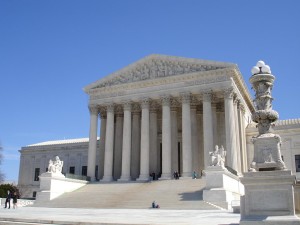The Supreme Court’s decision in Texas Department of Community Affairs v. Inclusive Communities Project, Inc. gets the Fair Housing Act right. The opinion strikes a balance between use of the FHA as a tool to address “unconscious prejudices” that result in housing discrimination while still ensuring that developers and state agencies are not subject to abusive claims of fair housing violations.
Justice Kennedy used employment discrimination case law under Title VII of the Civil Rights Act as a model for achieving this balance. In employment discrimination cases, litigants who believe they have been discriminated against are permitted to use, in the first instance, statistical evidence to show that a group of employees protected under Title VII have been systematically excluded from the workplace. If the employees make such a showing (called a prima facie showing) then an employer can defend itself by demonstrating that there is a business necessity for the employment practice that it used.
This approach makes even more sense in the context of housing decisions that may have resulted in concentrations of racial or ethnic minorities in a particular community. If a group can demonstrate through statistics or other criteria that a policy has had a “disparate impact” that has made housing “otherwise unavailable” to that group in a neighborhood, the defendant may assert a defense that its decision serves a valid policy interest. Justice Kennedy left plenty of room for public and private developers to decide where and how to construct new affordable housing. The Court was explicit that “housing authorities and private developers [must] be allowed to maintain a policy if they can prove it is necessary to achieve a valid interest.” Slip Op. at 19. In the words of the Court, “[i]t would be paradoxical to construe the [Fair Housing Act] to impose onerous costs on actors who encourage revitalizing dilapidated housing in our Nation’s cities merely because some other priority might seem preferable.” Id.
How does “disparate impact” work in the real world? Say a town has adopted a bylaw that forbids more than four unmarried individuals from residing together in a single residence (this is common in cities and towns that have high concentrations of college students). Such a bylaw has a disparate impact on persons based on their familial status (a protected group under the Fair Housing Act). If a plaintiff sues the town under the Fair Housing Act, the town is entitled to assert a valid interest in enforcing the bylaw (such as maintaining the health and safety of the resident by avoiding overcrowding). The question for the court then to decide is whether the town could achieve its valid interests in another, nondiscriminatory way (such as focusing merely on the number of residents, not their familial status).
The problems of meeting the needs of low income individuals and families and the challenges that confront developers trying to address those needs defy easy solutions. What the majority of justices in Texas Department of Housing and Community Affairs has given affordable housing developers and civil rights advocates is another tool to help both groups attain the critical goal of providing good quality housing for those in need while “striving to achieve our ‘historic commitment to creating an integrated society.'” Slip Op. at 24.

